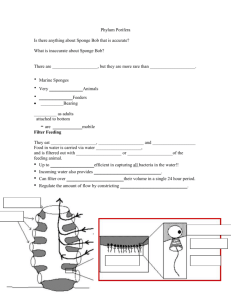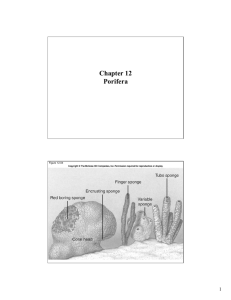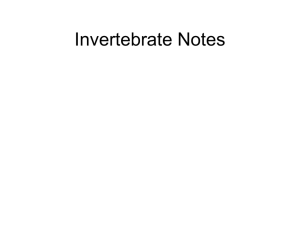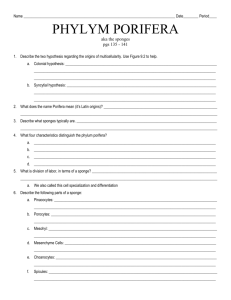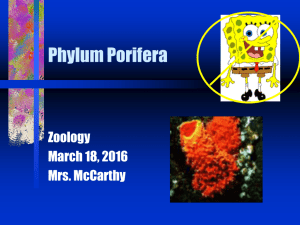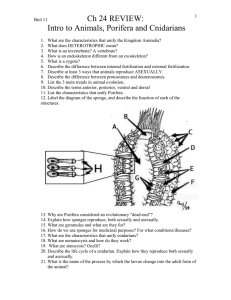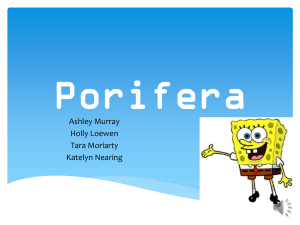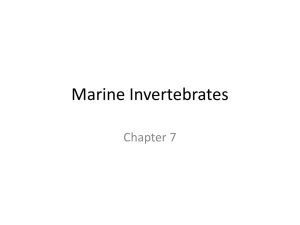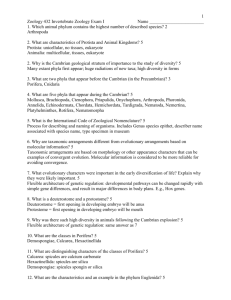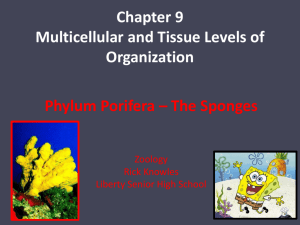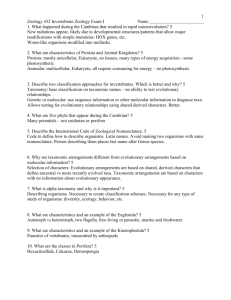meaning "pore bearer" - Dr. Bondrup
advertisement
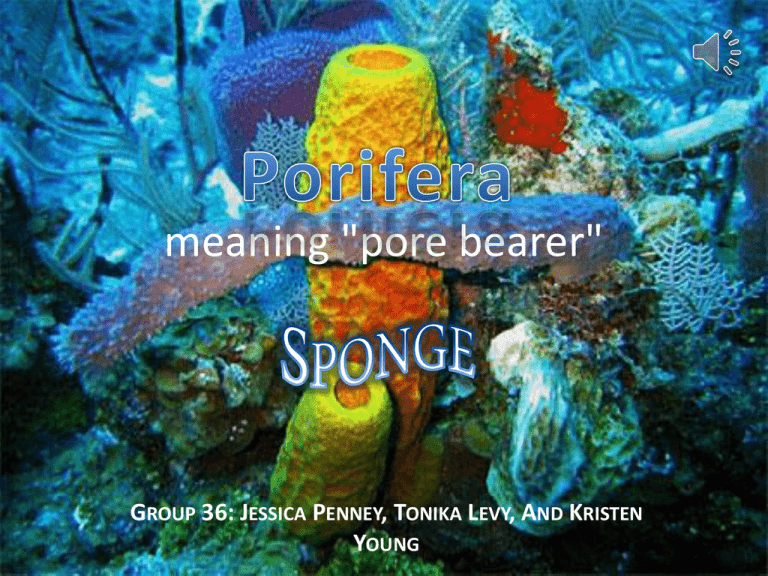
meaning "pore bearer" GROUP 36: JESSICA PENNEY, TONIKA LEVY, AND KRISTEN YOUNG Evolutionary History Previously assigned to a separate subkingdom, Parazoa Closest single-celled relatives are thought to be choanoflagellates Does not form a monophyletic group Fossil records of sponges have been found from about 580 million years ago Archaeocyathids were a type of coralline sponge ~5000 known species; ~150 freshwater species Basic Characteristics Cellular-level organization Body support (“skeleton”) provided by spicules Filter feeders through pores Either radially symmetrical or asymmetrical Spicules and potential biotoxin for defence Adults are sessile; larvae are motile Reproduction: Hermaphrodites Sexual ; Asexual Structure Body is divided into three layers: The outermost layer comprised of pinacocytes The middle layer, mesohyl The innermost layer, choanocytes ASCONOID SYNCONOID LEUCONOID Pinacocytes (Epidermal cells) Choanocytes (Collar cells) Mesohyl (Semi-fluid matrix) Water flow Classification Phylum Porifera Class Calcarea Class Demospongiae Class Hexactinellida Class Calcarea About 400 described species in this group Exclusively marine; shallower, sheltered waters less than 1000m Tropical regions associated with the coral reefs Members of this group have large structural spicules Skeletons made of calcite Mainly dull, some colorful Class Demospongiae Contain the largest number of species with 4750 species organized into 10 orders Marine environment; intertidal to the abyssal zone; some species inhabit freshwater Silicate spicules or spongin fibers or both within their soft tissues Brightly colored Class Hexactinellida Glass sponges Depths between 200 and 1000m Abundant in the Antartic Upright stature Skeleton made entirely of silica • • • • • http://animaldiversity.ummz.umich.edu/site/accounts/information/Porifera.html http://en.wikipedia.org/wiki/Sponge#Evolutionary_history http://course1.winona.edu/mdelong/Invertebrate/Porifera.pdf http://www.buzzle.com/articles/porifera-characteristics.html http://palaeos.com/metazoa/porifera/porifera.htm SOURCES

